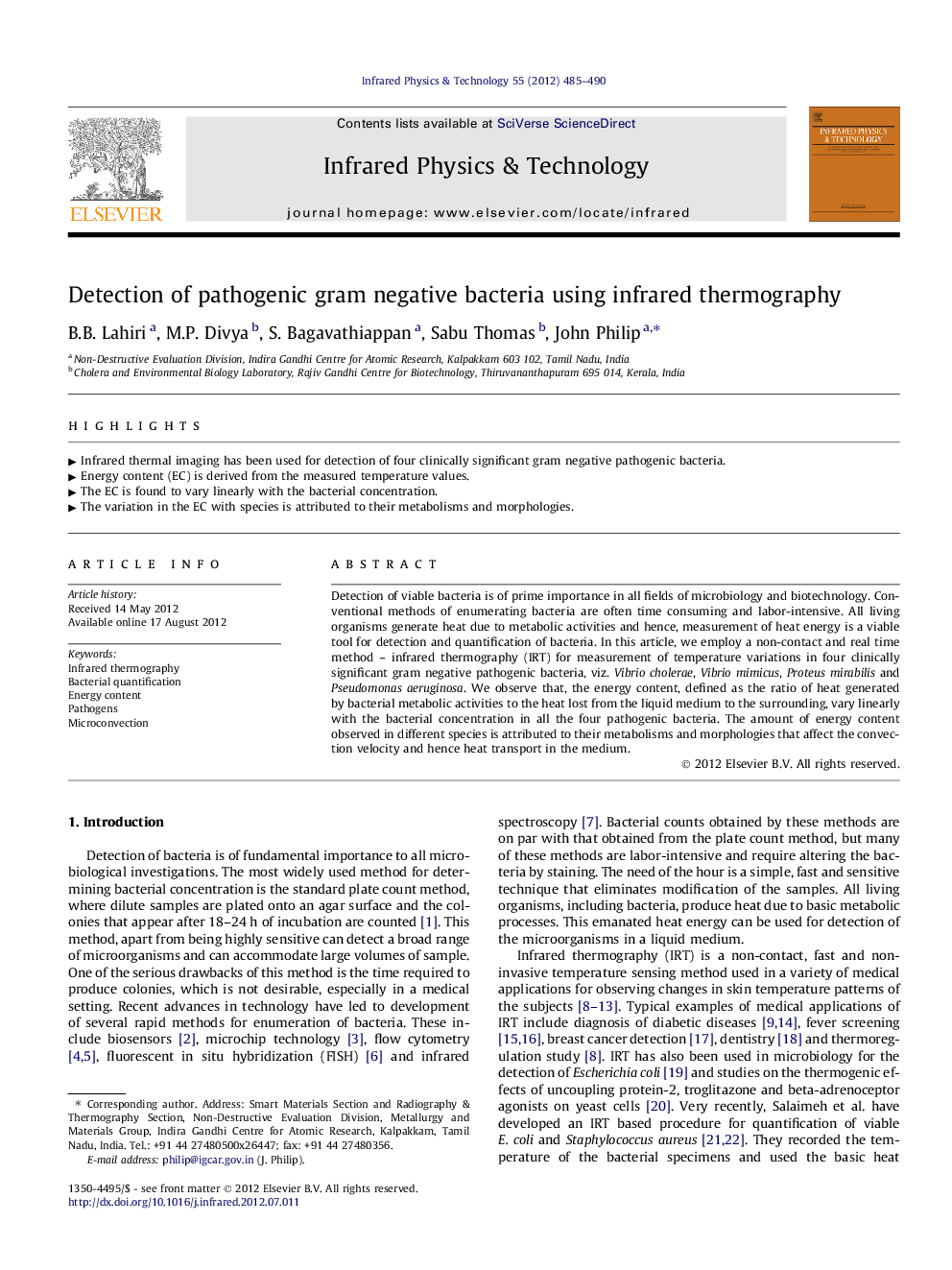| Article ID | Journal | Published Year | Pages | File Type |
|---|---|---|---|---|
| 1784795 | Infrared Physics & Technology | 2012 | 6 Pages |
Detection of viable bacteria is of prime importance in all fields of microbiology and biotechnology. Conventional methods of enumerating bacteria are often time consuming and labor-intensive. All living organisms generate heat due to metabolic activities and hence, measurement of heat energy is a viable tool for detection and quantification of bacteria. In this article, we employ a non-contact and real time method – infrared thermography (IRT) for measurement of temperature variations in four clinically significant gram negative pathogenic bacteria, viz. Vibrio cholerae, Vibrio mimicus, Proteus mirabilis and Pseudomonas aeruginosa. We observe that, the energy content, defined as the ratio of heat generated by bacterial metabolic activities to the heat lost from the liquid medium to the surrounding, vary linearly with the bacterial concentration in all the four pathogenic bacteria. The amount of energy content observed in different species is attributed to their metabolisms and morphologies that affect the convection velocity and hence heat transport in the medium.
► Infrared thermal imaging has been used for detection of four clinically significant gram negative pathogenic bacteria. ► Energy content (EC) is derived from the measured temperature values. ► The EC is found to vary linearly with the bacterial concentration. ► The variation in the EC with species is attributed to their metabolisms and morphologies.
